3.5 Monetary Policy
1/33
There's no tags or description
Looks like no tags are added yet.
Name | Mastery | Learn | Test | Matching | Spaced |
|---|
No study sessions yet.
34 Terms
Monetary Policy
Changes made to the interest rate, money supply and exchange rate by the Central Bank to influence aggregate demand
Money supply
The entire quantity of money circulating in an economy including notes, coins, loans and savings
Money supply diagram
Supply for money is fixed
Sm is perfectly inelastic
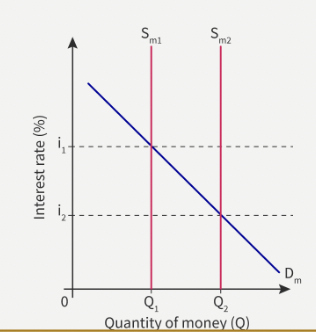
Monetary policy goals
Low unemployment
Reduce business cycle fluctuations
Promote a stable economic environment
External balance (exports = imports)
Low and stable rate of inflation - target is usually 2% for developed countries, developing countries usually have it a bit higher
Expansionary monetary policy
An increase in money supply or decrease in interest rates to stimulate aggregate demand
The aim is usually to reduce unemployment, encourage investment and consumption and close a deflationary / recessionary gap
Contractionary monetary policy
A decrease in the money supply or a rise in interest rates to reduce aggregate demand
The aim is usually to lower inflationary pressures, discourage excessive borrowing and spending and close an inflationary gap
Role of central bank
Determines the money supply and interest rate
Prints physical money and mints coins
Lender of ‘last resort’
Issues bonds and other financial instruments (open market operations)
Regulates the banking system
Factors the central bank must consider
State of the economy
Rate of growth of nominal wages
Business confidence levels
House prices
Exchange rate
Mint coins
Produce new coins officially, usually by a government’s mint (the authority responsible for making currency). Also, when new coins like Bitcoin are created and added to circulation, this process is called minting (also sometimes mining)
Lender of ‘last resort’
The central bank providing emergency liquidty (loans) to commercial banks or financial institutions when no one else is willing to lend them
Bonds
A financial asset representing a loan made by an investor (the bondholder) to a borrower (often government)
Basically, a bond = an IOU with interest
Monetary policy tools
Open market operations
Minimum reserve requirements
Changes in the central bank minimum lending rate (base rate)
Quantitative Easing
Open market operations (OMOs)
The buying and selling of government bonds by the central bank
If the central bank sells bonds, it gets money while the buyer gets a bond
The central bank can lock this money up and this reduces money supply in the economy thereby increasing interest rates and reducing inflation
If the central bank buys bonds, it gets bonds while the buyer gets money
This increases the money supply in the economy thereby decreasing interest rates and encouraging economic growth
Open market operations diagram
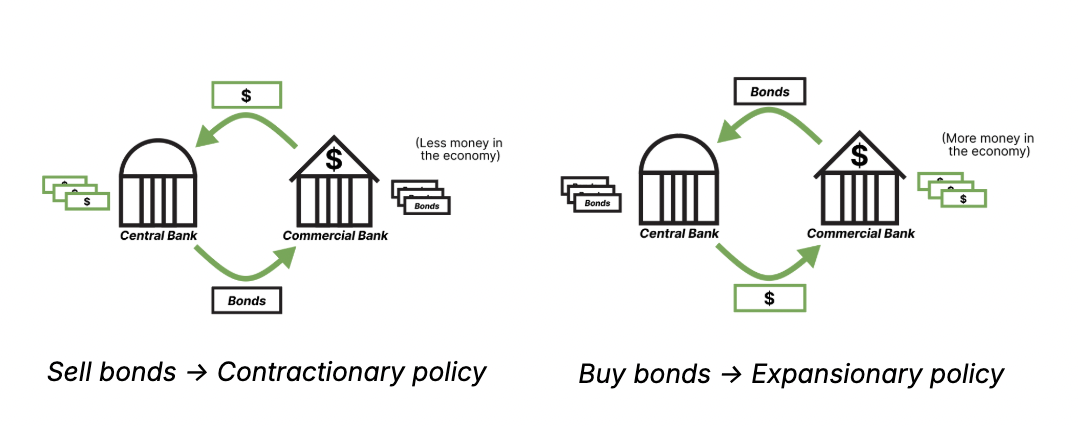
Minimum reserve requirements
Banks want to lend out as much money as possible as they make more off of interest
More money lent out = more money invested and consumed
If the central bank sets a minimum reserve requirement, banks are obliged to keep a certain amount of customer deposits safe (not lending them out)
This decreases the amount of money lent out, indirectly decreasing investment and consumption
Changes in the central bank minimum lending rate (base rate)
Central banks sometimes lend money out to commercial banks when they need it
If they increase this interest rate, commercial banks have a higher cost of
borrowing moneyCommercial banks will offset this by raising their interest rates, making borrowing more expensive for households and firms
This decreases consumption and investment
Quantitative Easing
Sometimes the central bank base interest rate is so low it can’t go lower but that doesn’t mean the economy won’t be in need of expansion
Quantitative easing refers to the buying and selling of bonds but on a larger scale and more long-term than OMOs
Same principle as OMOs but the purchases are larger and typically involve riskier bonds
E.g corporate bonds instead of government bonds
Interest rates
The cost of borrowing or the reward for saving money
Lower interest rates stimulate consumption and investment to boost AD
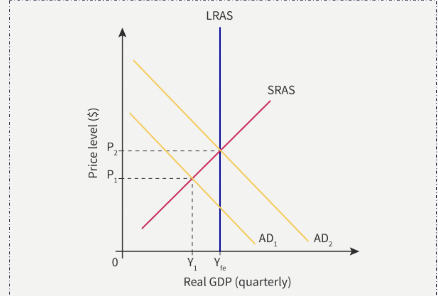
Bailout
Rescue from outside using public money (usually government / taxpayers)
E.g used in 2008 global financial crisis
Bail-in
Rescue from inside by forcing the bank’s own stakeholders to absorb losses
E.g. used in Cyprus in 2013 for bank recovery and resolution directive framework
Real interest rate
The interest rate with inflation taken into account
It indicates the true cost of borrowing money
Nominal interest rate
The interest rate quoted by commercial banks
If you borrow $100 at a 9% interest rate you will pay 9% in interest
But, the nominal interest rate is not adjusted for inflation
Equilibrium interest rate diagram
Expansionary MP - supply shifts right
Contractionary MP - supply shifts left
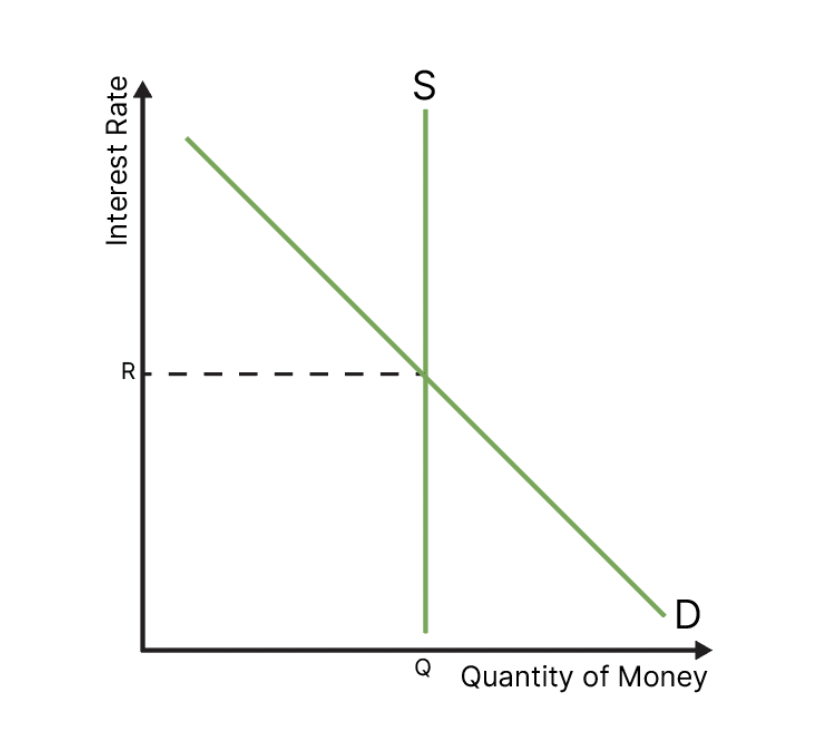
Interest rate diagrams

Money creation by commercial banks
Person 1 deposits $100 into bank Z
The bank is obliged to keep at least 10% of this deposit safe somewhere and is able to lend out the rest
$90 is lent out to person 2 who then needs a place to keep that money
Person 2 therefore deposits this loan into bank S
Bank S, like any other bank, must keep 10% of its deposits safe so it can lend out $81 to person 3
Person 3 now has $81 and can put that into bank Y who does the same thing as bank Z and bank S
The cycle repeats
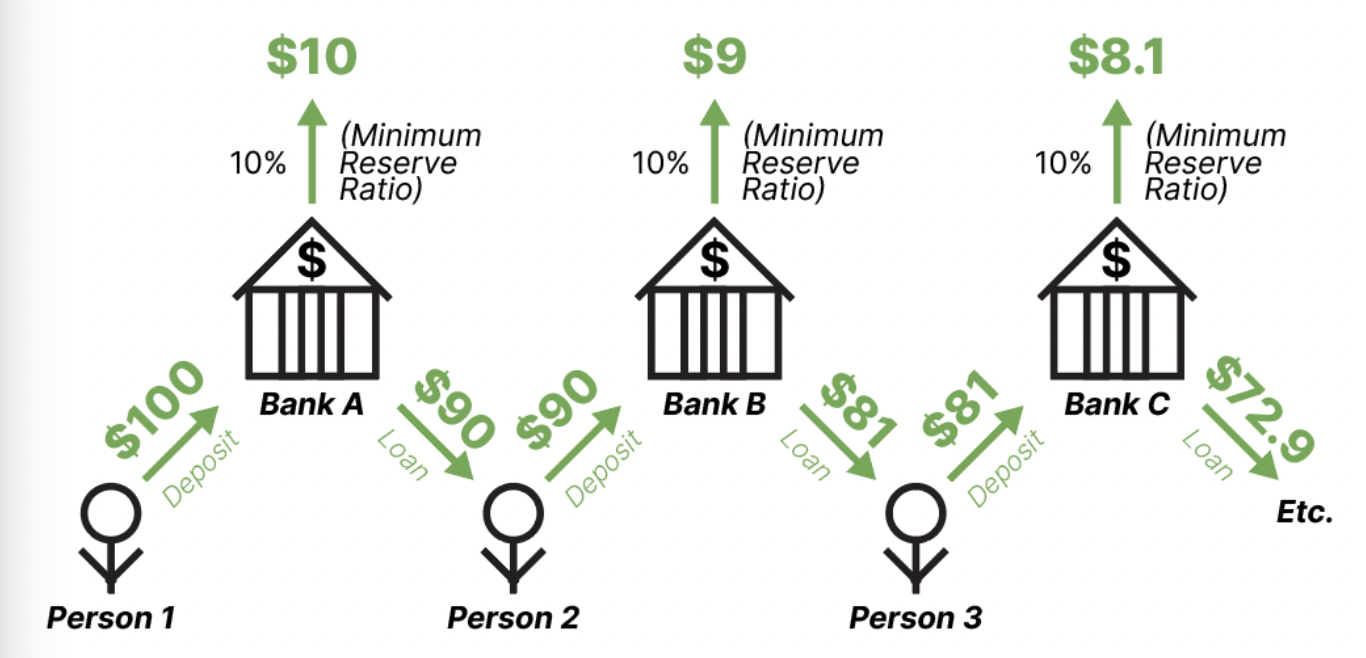
Money multiplier formula
1 / Reserve Ratio
Example
1 / 0.1 = 10 = money multiplier
for every $100 deposited, the economy actually has 10×100 = 1000
Meaning an additional $900 is made by commercial banks from just a $100 deposit
Low MMR = more money creation = more money = cheaper borrowing = cheaper investing = higher real GDP
Role of expansionary MP
Decrease minimum reserve ration so commercial banks can lend out more
Decrease the central bank interest rate so commercial banks can take out cheaper loans so consumers and firms hopefully also get cheaper loans - this is not that effective for expansionary policy as banks will often simply retain their loans' interest rates to increase profit margins
Buy government bonds (so there is more money in the economy)
Buy corporate bonds (quantitative easing, so there is more money in the economy)
Role of contractionary MP
Increase minimum reserve ratio
Increase central bank interest rate
Sell government bonds
Expansionary diagrams (Neoclassical & Keynesian)
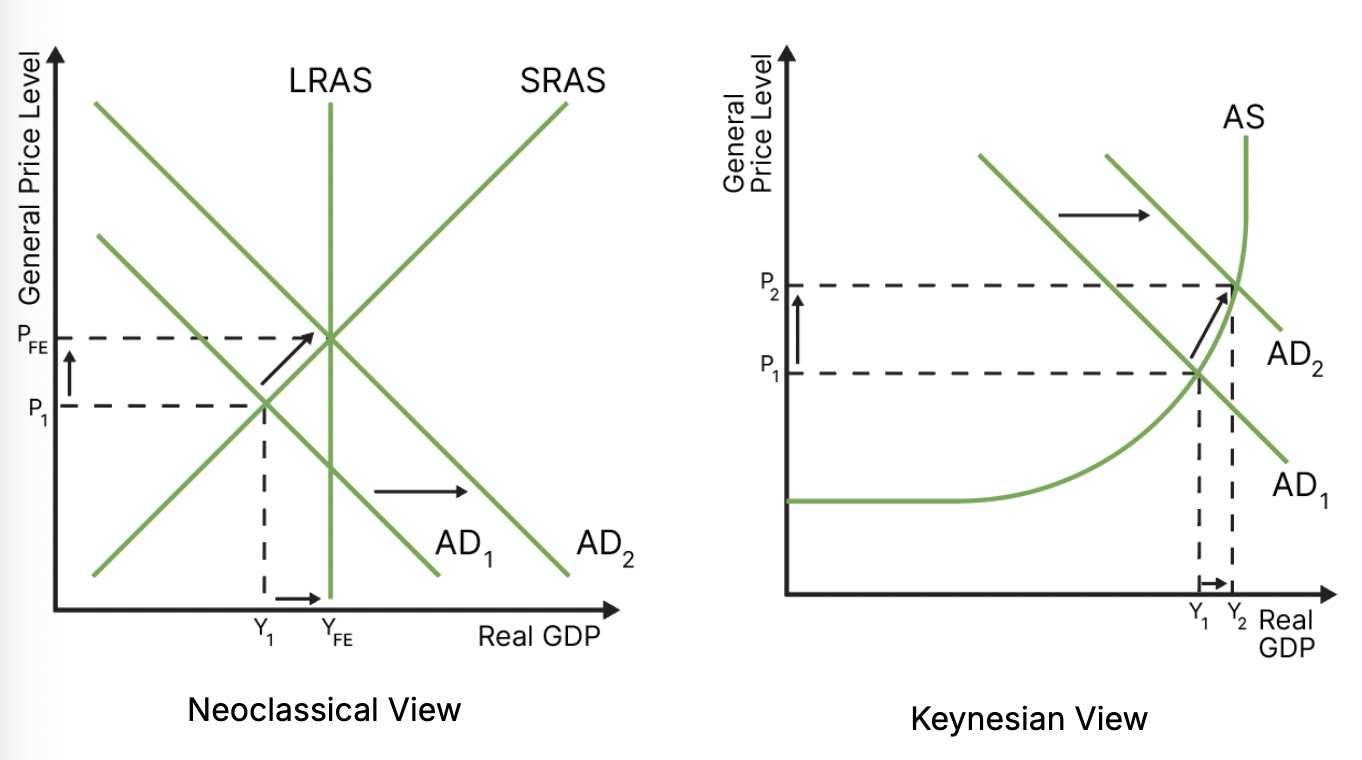
Contractionary diagrams (Neoclassical & Keynesian)
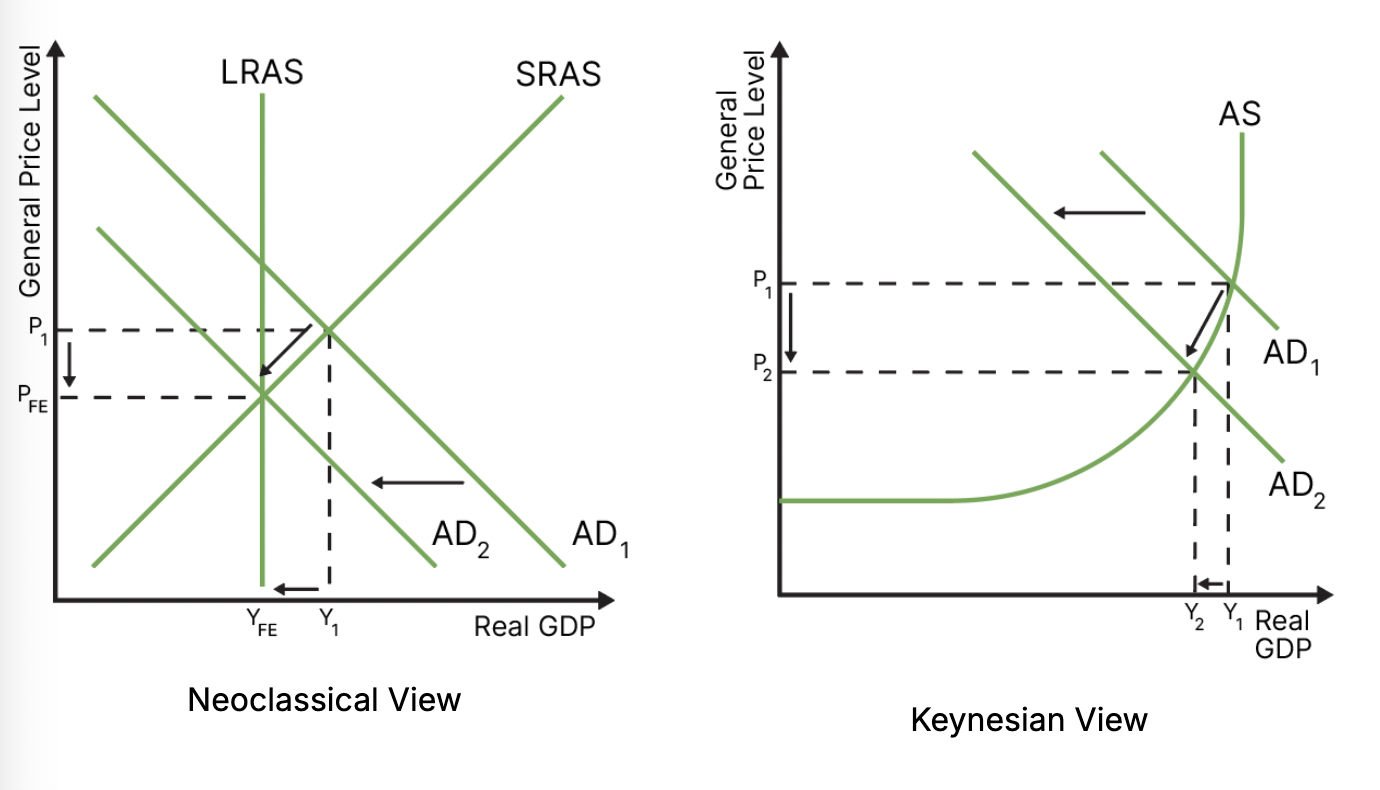
Monetary policy strenghts
Incremental and flexible
Central banks can adjust rates in small steps and easily reverse decisions
Short time lags
Independent central banks can act quickly without political delays
Monetary policy weaknesses
Limited at very low rates
When interest rates are near 0, cutting them further is difficult
Confidence levels
Changes in rates can reduce consumer and business confidence, lowering consumption and investment